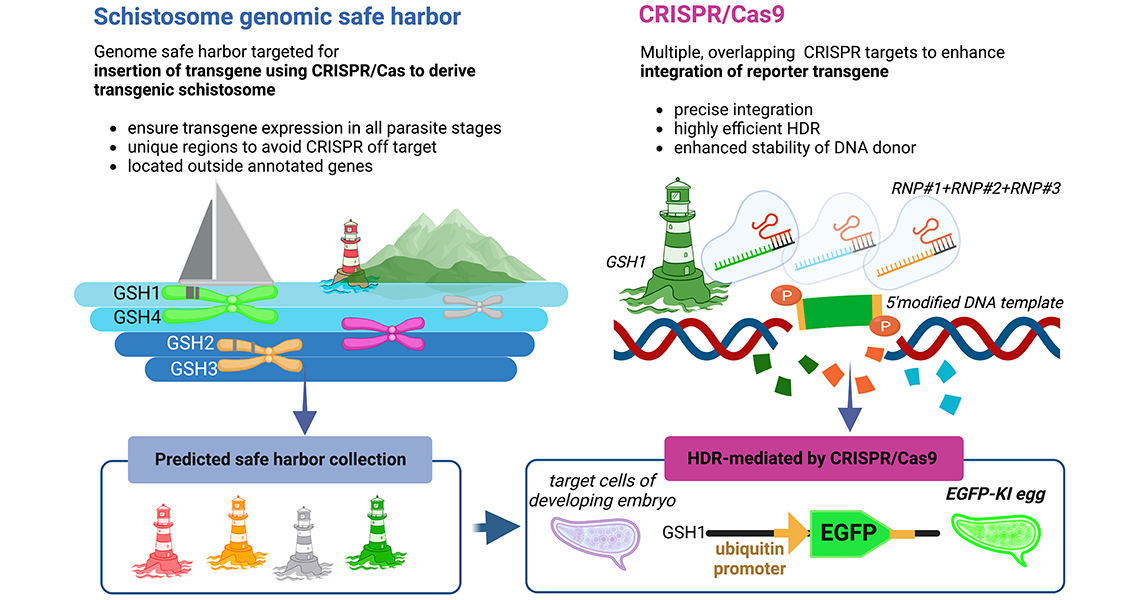WASHINGTON (July 24, 2023) — Neglected tropical diseases affect more than 1 billion people — one-sixth of the world’s population. Despite their devastating health consequences. These diseases, which occur in some of the world’s poorest and most isolated communities, often receive little attention from global funding agencies and pharmaceutical companies. They can also be difficult for researchers to study given many neglected tropical diseases are caused by parasites with large, complex genomes.
Now, in a bid to make it easier to study these neglected diseases, researchers at the George Washington University (GW) School of Medicine and Health Sciences (SMHS), in collaboration with colleagues in France and Germany, have developed a model organism from a genetically modified parasitic worm. The team identified four so-called genomic safe harbor sites in the chromosome of the parasitic worm, Schistosoma mansoni. These “goldilocks” sites are places where genes or genetic elements can be safely inserted without damaging the organism.
Using CRISPR technology, GW SMHS Department of Microbiology, Immunology, and Tropical Medicine professors Paul J. Brindley, PhD, and Wannaporn Ittiprasert Tanno, PhD, successfully inserted a transgene into a genome safe harbor site that, when expressed in the worm, fluoresces as bright green.
The researchers say their method creates a model that could be used for testing additional gene therapies on helminth parasites with the ultimate goal of developing new drugs and vaccines to treat and prevent schistosomiasis and other similar diseases.
The article, “Targeted Insertion and Reporter Transgene Activity at a Gene Safe Harbor of the Human Blood Fluke, Schistosoma Mansoni,” was published in the journal Cell Reports Methods on July 24, 2023.


